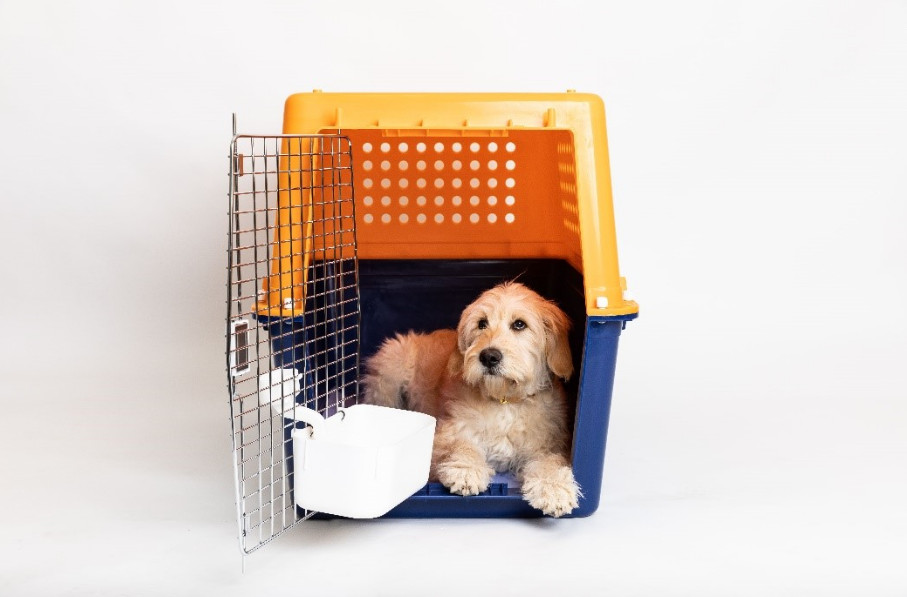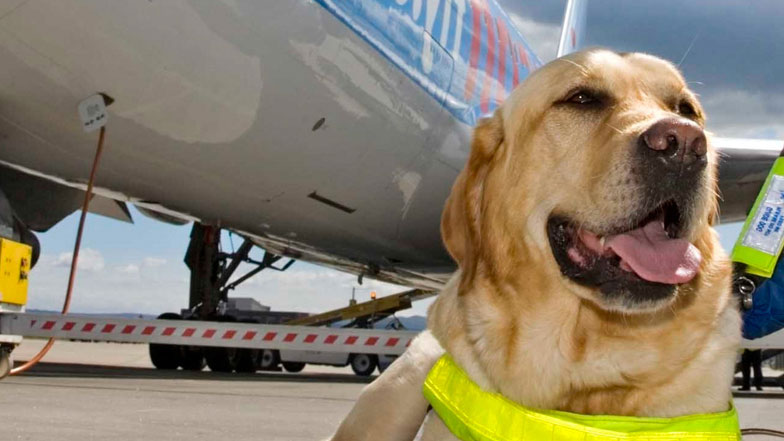What do I need to consider before transporting my pet by air?

There are a number of important factors to be aware of when considering transporting your pet by air, domestically or internationally. The following general principles can be applied to air transportation of pets.
Is air travel suitable for your particular pet?
Not all pets are suited to travel by air and owners should carefully consider whether their pet will be suitable for this type of transport. If not, owners should investigate other available modes of transport, preferably where the animal can be supervised directly throughout the transport process.
Your pet’s health
Your pet should be fit and healthy and able to cope with being confined for an extended period. An airport is an unfamiliar and noisy environment that can cause some animals to become stressed and agitated.
It is advisable to consult with your veterinarian before you consider transporting your pet by air. They will be able to check your pet’s health and assess your pet for air travel. Air transport is not recommended for anxious or stressed animals and other alternative safer modes of transport, where direct supervision throughout the transport process is possible, should be chosen instead.
Preparing your pet
Your pet should be used to and comfortable in the container in which they will be transported. This process needs to start at least a few weeks before travel. The aim is for your pet to associate the container with good things and become so comfortable with it that they may even choose to go into it and sleep.
Place the container somewhere your pet likes to relax in the house. Make it as inviting as possible by putting in your pet’s favorite comfortable bedding, toys and treats. You can feed your pet treats and their meals inside the container also and give them looks of praise and cuddles when they go inside it. Keep doing this every day for at least a few weeks and until the time of travel arrives.
Your pet will be confined in their container from the time of lodgement until you collect them at the destination.
Before you place your pet in the container and lodge them, make sure they have had plenty of opportunities to go to the toilet and stretch and exercise.
You may offer your pet a light meal a few hours before travel.
Container type
Containers should comply with the current IATA Live Animal Regulations.
The animal in the container must have enough space to turn about normally while standing, to stand and sit erect, and to lie in a natural position.
Choose a container that has a water container present within it, with outside access for filling. Food is usually not needed for domestic flights, for international flights check the IATA recommendations for food/food containers.
Containers must provide adequate ventilation (which is a causative factor in heat stress, as well as temperature) and adequate shelter and shade to provide protection from the weather and to allow the animal to feel protected and not exposed.
Containers made entirely of welded mesh or wire mesh are not suitable for air transport.
Heat stress
Pet owners should be aware of heat stress and take steps to minimize the risk. Heat stress occurs when heat generation exceeds the body’s ability to lose heat and it can be fatal. Environmental predisposing factors include a warm/hot humid environment, lack of adequate shade, lack of adequate ventilation and lack of water.
To minimize the risk of heat stress during air transport, choose a container that complies with the IATA regulations and book flights that will take place when the temperature is cooler, for example, avoid flying when it is hot, and avoid flights during the hot parts of the day. If the temperature will be high that day rescheduling the flight to another cooler day is recommended.
Any animal is susceptible to heat stress but some animals may be at increased risk including overweight animals, brachycephalic breeds, heavy coated breeds (such as Newfoundlands, Malamutes, Siberian Huskies, Samoyeds and Persian cats); animals with respiratory, cardiovascular and/or brain disease and animals travelling from a cooler climate to a warmer climate. Very young or very old animals may also be more susceptible. Please see the IATA regulations for age restrictions and recommendations.
Brachycephalic breeds
While any dog or cat is susceptible to heat stress, brachycephalic (short-faced) breeds are generally at greater risk of heat stress when compared to dogs and cats with a normal muzzle length.
The characteristic flat face of brachycephalics causes narrowing or obstruction for the passage of air and oxygen trying to get through the airways to the lungs, called Brachycephalic Obstructive Airway Syndrome (BOAS) .
Animals with BOAS can’t breathe normally and this significantly compromises their ability to cope with stress and raised temperatures.
The ability of cats and dogs to maintain normal body temperature and thermo-regulate is closely related to the respiration process.
Dogs, for example, use panting (evaporative cooling) as a means of expelling heat from their bodies. Dogs rely on normal air flow through their respiratory tract to do this effectively.
Abnormal brachycephalic anatomy makes it difficult for these animals to adequately thermo-regulate and oxygenate sometimes even under normal conditions.
When placed under additional stressors such as being exercised, stressed/excited or placed in an environment with a high ambient temperature or inadequate ventilation they may be unable to adequately compensate and this can result in over-heating, collapse and in some cases, death.
Any brachycephalic breed, including British Bulldogs, French Bulldogs, Pugs, Boston Terriers, Pekingese and Himalayan and Persian cats, are at greater risk of heat stress.
Some airlines prohibit carriage of certain brachycephalic breeds. Risks to brachycephalics are significant and, therefore, air transportation of brachycephalic animals should be avoided for their own health, safety and welfare.
Owners should be aware of the increased risks associated with air transportation of these types of animals and other alternative safer modes of transport, where direct supervision throughout the transport process is possible, should be chosen instead.
Sedation
Sedation is generally not recommended for pets travelling by air due to health and safety concerns. Please see the IATA regulations which include the statement ‘Sedation of animals, except under certain conditions and carried out under veterinary direction, is not recommended’.
Access to drinking water for Pet

A water container should be present within the container with outside access for filling. The water holder should remain in an upright position at all times and water holders need to be firmly attached to the cage. To ensure containment of any spills the container should have a spill tray installed lined with safe absorbent material.
You may offer your pet a light meal a few hours prior to travel.
Note that some types of animals are prohibited from air travel, some can only travel if a veterinary certificate is supplied certifying the animal is fit to travel and for some pets travel is not recommended.
Talk to the airline/airline freight company and pet transport company (if you have decided to organize your pets travel through a pet transport agency) for more information.


